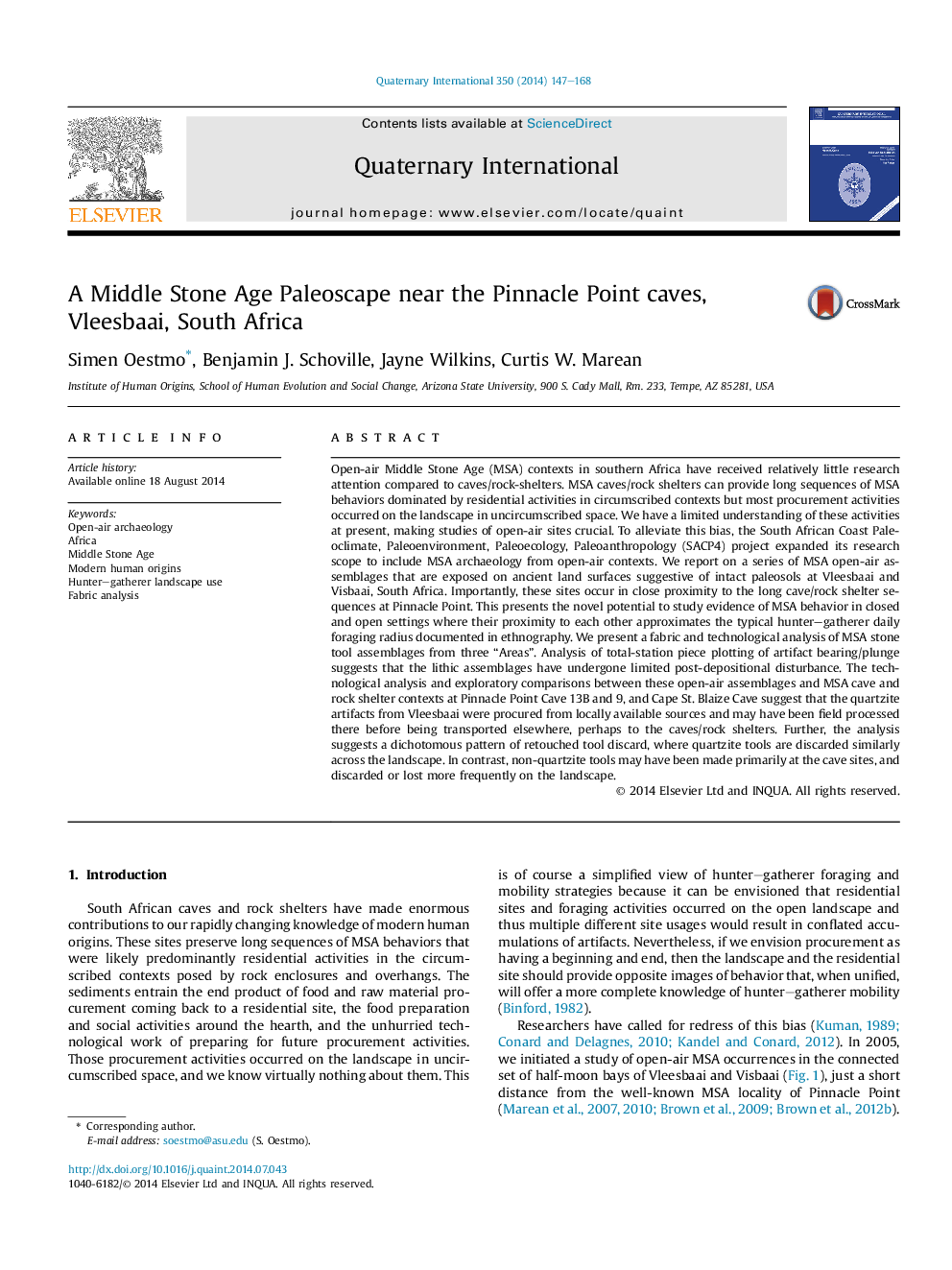| Article ID | Journal | Published Year | Pages | File Type |
|---|---|---|---|---|
| 1041480 | Quaternary International | 2014 | 22 Pages |
Open-air Middle Stone Age (MSA) contexts in southern Africa have received relatively little research attention compared to caves/rock-shelters. MSA caves/rock shelters can provide long sequences of MSA behaviors dominated by residential activities in circumscribed contexts but most procurement activities occurred on the landscape in uncircumscribed space. We have a limited understanding of these activities at present, making studies of open-air sites crucial. To alleviate this bias, the South African Coast Paleoclimate, Paleoenvironment, Paleoecology, Paleoanthropology (SACP4) project expanded its research scope to include MSA archaeology from open-air contexts. We report on a series of MSA open-air assemblages that are exposed on ancient land surfaces suggestive of intact paleosols at Vleesbaai and Visbaai, South Africa. Importantly, these sites occur in close proximity to the long cave/rock shelter sequences at Pinnacle Point. This presents the novel potential to study evidence of MSA behavior in closed and open settings where their proximity to each other approximates the typical hunter–gatherer daily foraging radius documented in ethnography. We present a fabric and technological analysis of MSA stone tool assemblages from three “Areas”. Analysis of total-station piece plotting of artifact bearing/plunge suggests that the lithic assemblages have undergone limited post-depositional disturbance. The technological analysis and exploratory comparisons between these open-air assemblages and MSA cave and rock shelter contexts at Pinnacle Point Cave 13B and 9, and Cape St. Blaize Cave suggest that the quartzite artifacts from Vleesbaai were procured from locally available sources and may have been field processed there before being transported elsewhere, perhaps to the caves/rock shelters. Further, the analysis suggests a dichotomous pattern of retouched tool discard, where quartzite tools are discarded similarly across the landscape. In contrast, non-quartzite tools may have been made primarily at the cave sites, and discarded or lost more frequently on the landscape.
